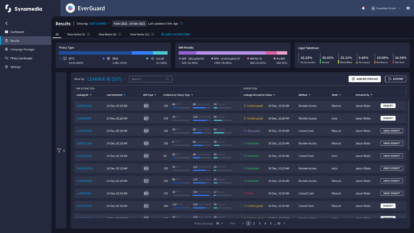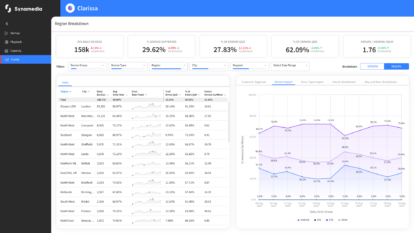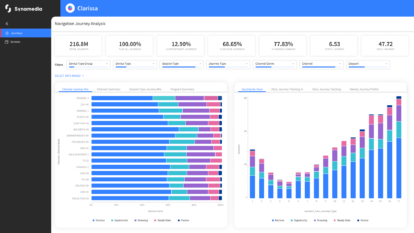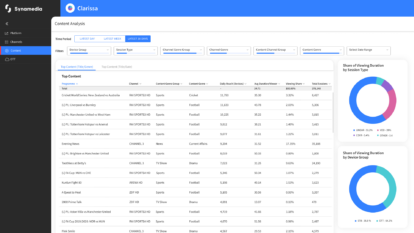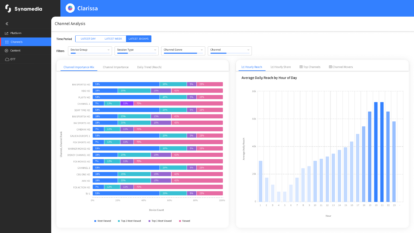A wise friend of mine once said, “People don’t want cable, they don’t even want to watch TV, they just want to laugh, and cry, and cheer, and learn.” He was reminding me that it’s not the technology that is important, but how TV connects with people in ways that other types of media cannot.
Since then, the proliferation of mobile and broadband services across the world has significantly lowered the constraints for video providers to connect their content with willing consumers. Gone are the days when video providers needed to invest in capital intensive infrastructure builds just to deliver a video signal from point A to point B.
Monetising with Ultimate Reach and Unlimited Choice
Even the term “OTT” or “Over-the-Top” indicates how streaming video does not need dedicated pipelines but rides on top of any network connected to the internet. The speed, reliability, and ubiquity of access means that almost anybody can get broadcast quality video delivered to their device of choice, regardless of location.
Consequently, most consumers can tap into an unlimited range of video content choices covering every interest. But with easy access to almost every eyeball on the planet, how do video providers take advantage of this connectivity to monetise their content, while remaining profitable?
Popular OTT Content Monetisation Models
With growing opportunities for media distribution, there are now multiple options for content monetisation. Let us look at some of the popular models:
Subscription
Let’s start at the beginning. Most early streaming companies were already providing video in some other format, whether this was via mail-delivered discs or over satellite or cable networks. The predominant business model then, and even now, was based on subscriptions. Subscriptions were simple, easy for the consumer to understand and value, and fairly sticky, as most people simply automatically renewed their service, even if the terms and price had changed.
Advertising
Content owners and broadcasters didn’t typically own the network and delivery, so they primarily made money through advertising. Primetime content and live sports drew huge audiences that delivered the reach that advertisers sought. As new channels opened up more inventory, streamers adapted digital web technologies to deliver targeted ads with precise census-level measurement. The ease of connecting demand and supply in this ecosystem meant even smaller, niche content owners could still make a living as AVOD (Advertising supported Video on Demand) or FAST (Free Advertising Supported TV) providers.
Transactional
Although purely transactional services are much less prominent these days, there still exists a market for them as an option for streamers that want to charge a premium for special live events or for early-release blockbusters. TVOD (TV On Demand) can also fill the subscription gap for users that want to watch an individual piece of content without paying for an entire month or more.
Hybrid
But if we fast-forward to our current environment, it’s obvious that there isn’t just one right answer. If anything, the answer is “all of the above.” Almost every major OTT video service today has some combination of subscription, advertising, and transactional revenue built into their offering.
Why is that? Why do video providers feel the need for such complexity? Well, let’s look at some of the challenges they are facing.
Monetisation Challenges for OTT Video Providers
Churn
The ease of signing up and onboarding for a streaming service has a downside as well. No equipment to buy or rent means a lower cost of acquisition, but it’s likewise easier to drop services with no equipment to return. This is one of the factors contributing to a higher churn for streamers, with annualised rates reaching 47% in 2023 according to Parks Associates.
Engagement
The tyranny of choice is real, as consumers have access to, and regularly use, multiple OTT services, each of which might have thousands of titles to sift through. Nielsen estimates that the average user spends 10.5 minutes looking for content to watch, which leads to higher abandonment and lower engagement overall.
Profitability
Subscriber growth is no longer the engine that it was when streaming video was exploding before and during the pandemic. In this current low-growth environment, most of the major streamers have raised rates and added new monetisation methods, such as advertising. They are pruning relatively new content from their catalogues to lower their cost of residuals and licensing, while looking for ways to further lower their operational costs and reduce revenue loss due to password sharing.
So, how can video providers meet these challenges head-on, and what are some best practices they can adopt?
OTT Content Monetisation Best Practices
Data & Outcome Driven
One aspect that can’t be overlooked is that all of these connected devices have a wealth of information available which can inform their business decisions. Leveraging data insights and A/B testing to track consumption patterns and viewer behaviour provides important insights as well as forming the basis for tackling issues like content discovery and rampant password sharing. Combining this data with demographic information will also establish a broader and more valuable foundation for targeted advertising.
Personalisation & Localisation
Enabling greater personalisation improves engagement by removing the clutter, and it makes for a stickier service as well. User experiences that excel at promoting the right content at the right time are more likely to be used, and reduce the friction to find content that resonates, meaning the viewer is more likely to return. Having local content and language support can further distinguish you from the crowd. Even advertising benefits when the ads delivered are relevant and localised, with Finecast reporting 10% higher recall and 20% more attention with targeted ads.
Flexibility & Speed
The market moves fast, and video providers need to be able to keep up with the competition. Features that were cutting edge become table stakes in short order while content shelf life can diminish rapidly. Video providers need the agility, scale, and innovation that cloud-based solutions can provide, along with partners that have a deep understanding of the TV landscape, yet with an eye on the future.
How Can Synamedia Help You Maximise Your OTT Content Monetisation?
Synamedia’s suite of products are designed to help you to tackle your biggest OTT challenges while ensuring you get the most out of your video service. Whether you need targeted advertising, security, or business insights, Synamedia has a cloud-based solution that can augment your existing systems and deliver fast results to your bottom line. Talk to an expert to find out more.
About the Author
Ben is a 20+ year veteran of the video industry, having worked in various roles including pre-sales, applications engineering, and technical marketing for Scientific-Atlanta, Cisco, and now Synamedia. He is currently the Product Marketing lead for the Synamedia Iris and Clarissa solutions. Ben holds a BS and master’s degree in Electrical Engineering from the Georgia Institute of Technology. In his spare time, Ben enjoys watching football, playing guitar, and nerding out over Marvel movies and Terry Pratchett novels.

